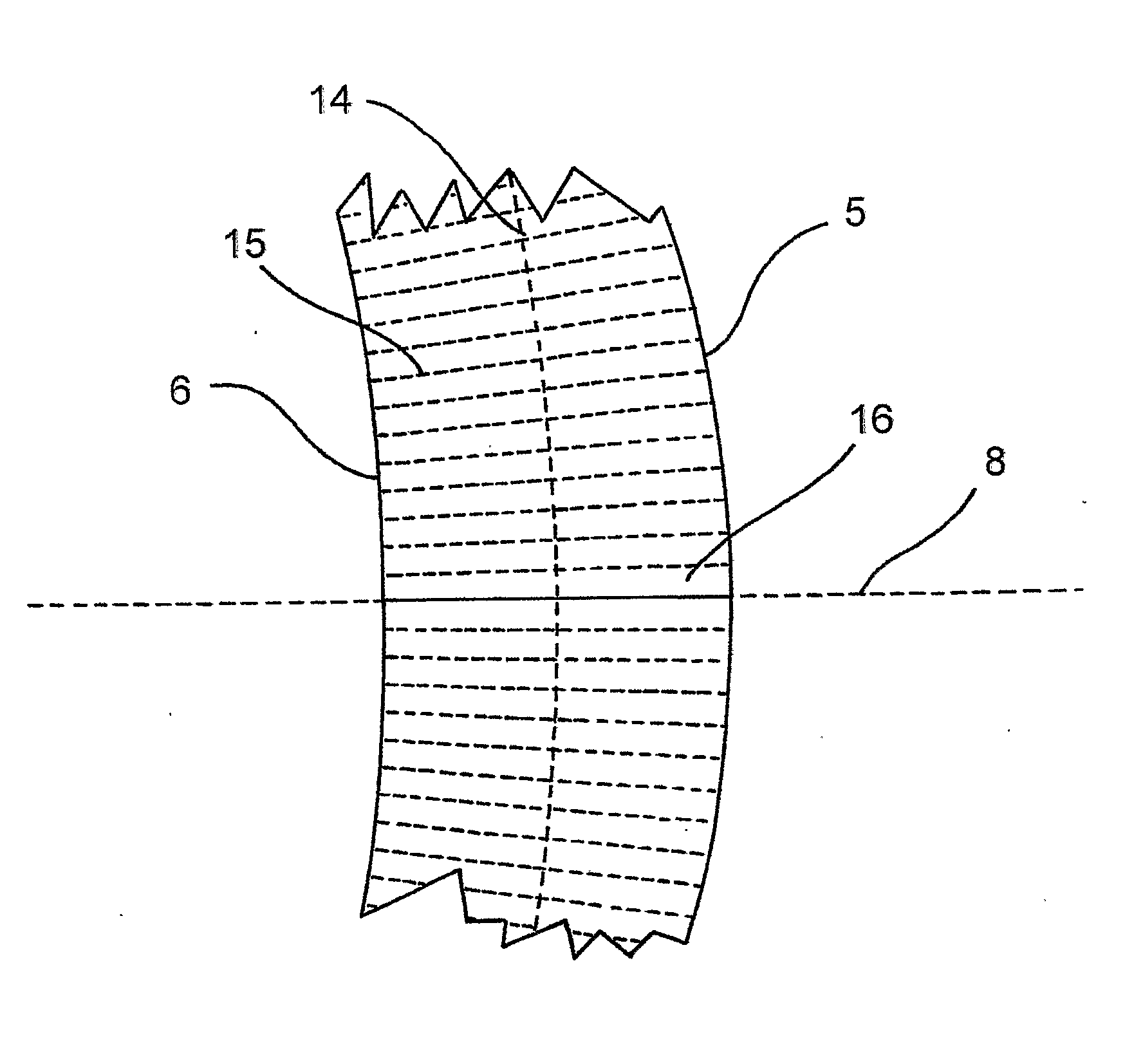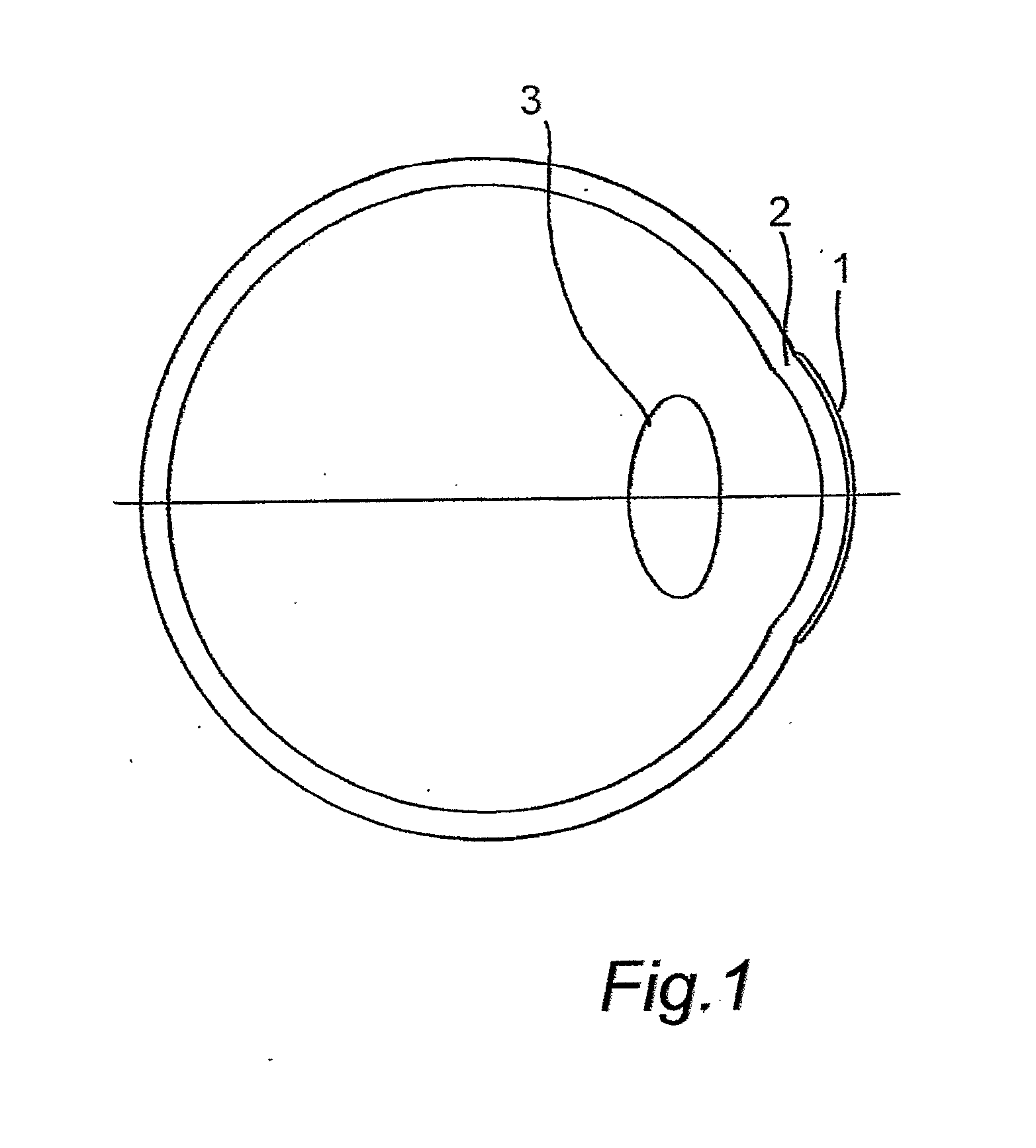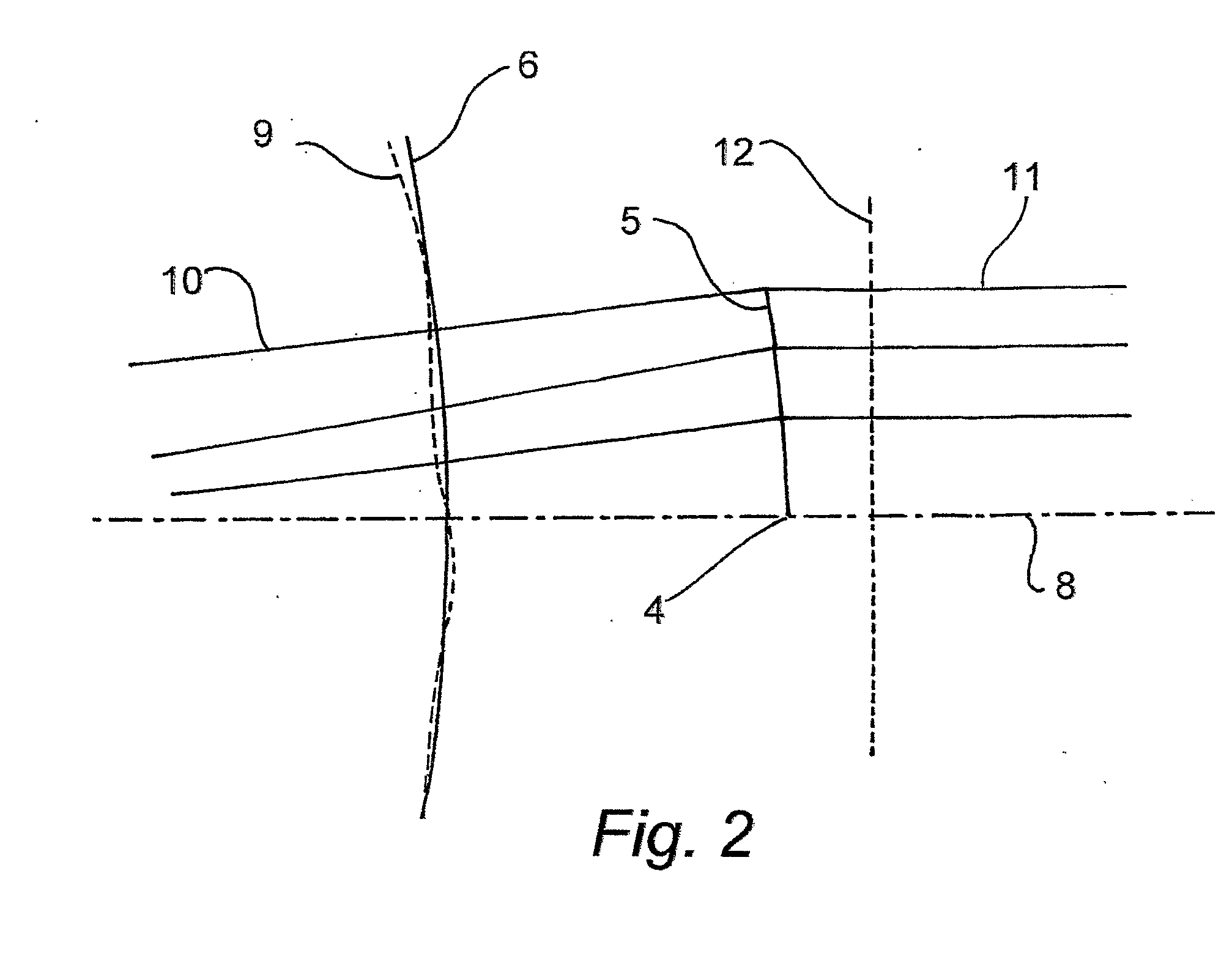Contact Lenses
a contact lens and soft technology, applied in optics, medical science, instruments, etc., can solve the problems of inability to achieve good visual acuity using conventional contact lenses, significant refractive errors giving rise to visual problems associated with the focal power of the eye, and associated cost and effort of fitting, so as to reduce the translational movement of the lens, increase translational stability, and reduce the sharpness of the zonal junction
- Summary
- Abstract
- Description
- Claims
- Application Information
AI Technical Summary
Benefits of technology
Problems solved by technology
Method used
Image
Examples
example 1
[0044] The method of the present invention requires the determination of certain characteristics of a selected eye.
[0045] Firstly, the ocular performance of a selected eye is measured using a wavefront aberrometer, such as the Topcon KR-9000PW Wavefront analyser. The data generated is represented using a set of Zernike coefficients relating to Zernike polynomial descriptions of wavefront geometrical forms. Zernike coefficients are well known to those skilled in the art, and are frequently used to convey wavefront geometrical information. The wavefront may alternatively be represented using any other suitable mathematical method, such as discrete point file definitions, Bezier surface patch definitions, or other two-dimensional or three-dimensional line or surface definitions.
[0046] Secondly, the topography of the cornea of the selected eye is determined using a corneal topographer such as the EyeSys 2000 Corneal Analysis System. This system can represent the topography of the corn...
example 2
[0060] A computer generated model may be generated in accordance with the present invention using information obtained from a sample population.
[0061] The ocular performance of several eyes from a sample population, typically of between 50 to 1000 people (preferably about 500 people) are measured using a wavefront aberrometer such as the Topcon KR-9000PW Wavefront analyser. The data is preferably represented using a set Zernike coefficients relating to Zernike polynomial descriptions of wavefront geometrical forms. The Zernike coefficients are represented in a distributive form in order to determine statistical similarities between the population data. Significant similarities are then determined and used to create a collective set of Zernike coefficients.
[0062] The soft contact lens design is then determined using the method described in Example 1. Large-scale production techniques such as cast moulding may be used in the manufacture of the soft contact lens, wherein the insert t...
PUM
 Login to View More
Login to View More Abstract
Description
Claims
Application Information
 Login to View More
Login to View More - R&D
- Intellectual Property
- Life Sciences
- Materials
- Tech Scout
- Unparalleled Data Quality
- Higher Quality Content
- 60% Fewer Hallucinations
Browse by: Latest US Patents, China's latest patents, Technical Efficacy Thesaurus, Application Domain, Technology Topic, Popular Technical Reports.
© 2025 PatSnap. All rights reserved.Legal|Privacy policy|Modern Slavery Act Transparency Statement|Sitemap|About US| Contact US: help@patsnap.com



